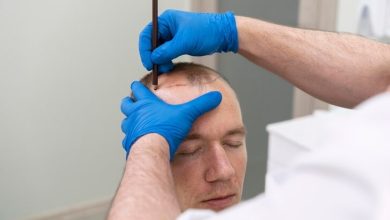8 Things You Didn’t Know About Medical Device Production

Producing medical devices is meticulous, requiring much attention while adhering to multiple strict regulations. Whether it is about deciding its design or planning its distribution, producing medical devices is a big job. Since this is a multi-step process that involves various stakeholders, there are a lot of things that you need to be aware of. This article will provide all that information to help you understand this industry and excel in your medical device production business.
The Medical Device Industry is Heavily Regulated
Medical device production is a highly regulated industry due to the potential risks to patient safety. Regulatory agencies, such as the FDA in the US, require manufacturers to meet strict guidelines and submit their devices for approval before they can be sold to the public. These guidelines cover every aspect of device design, manufacturing, labeling, and packaging to ensure the safety and quality of the devices. Manufacturers who do not comply with these guidelines can lead to costly recalls and legal action against the manufacturer. The regulatory process can also be time-consuming, making it difficult for new manufacturers to enter the market.
Medical Devices Come in Different Classes
Medical devices are classified based on their potential risks to patients, with Class I devices posing the lowest risk and Class III devices posing the highest risk. The classification system determines the level of regulatory scrutiny a device must undergo before being sold to the public. Class III devices require the most thorough and strict testing and documentation due to their high risk to patients. Manufacturers must ensure their devices meet the appropriate classification requirements to avoid regulatory issues.
Quality Control is Critical in This Industry
Quality control is critical in medical device production to ensure that devices meet regulatory standards and are safe and effective for patients. Manufacturers must track every aspect of the production process, including raw materials and finished products, to ensure that each component meets specifications. They must also document every step of the production process, including any changes, to ensure the device is safe and effective. Let alone, basic principles of the device work should be explained in details (check an example of one of the devices by Sensonica). Failure to maintain strict quality control processes can lead to costly recalls, legal action, and damage to the manufacturer’s reputation.
Medical Devices Requires Highly-Regulated Clean Rooms for Production
A manufacturer must produce the medical devices in clean rooms to prevent contamination, which can affect device performance and patient safety. Manufacturers are supposed to use specialized equipment, such as air filters and gowning stations, to maintain the cleanliness of the clean room. Using clean rooms adds to the complexity and cost of medical device production that any manufacturer must evaluate while planning a medical device’s production.
Medical Device Production Relies on Advanced Technology
Medical device production relies on advanced technology, such as computer-aided design (CAD) and pharma ERP software, to improve efficiency and ensure quality. CAD software lets manufacturers design and simulate devices before production while reducing the risk of design flaws and improving the manufacturing process. On the other hand, the ERP software tracks inventory, production schedules, and regulatory compliance, improving production efficiency and reducing errors. Such advanced technology is essential for manufacturers to remain competitive and finish their production process quickly.
Medical Devices Require Testing and Validation
Before a medical device can be sold to the public, manufacturers should do extensive testing of these devices to validate their safety. Doing that helps the manufacturers ensure their devices perform as intended and fulfill their customer’s needs. In addition, the production process requires validation to ensure that each device is consistently manufactured to the same high standard. Even though these procedures are vital, testing and validation are time-consuming and add to the cost of medical device production.
Medical Device Production is a Competitive Global Industry
Medical device production is a global industry with manufacturers located in countries worldwide. The industry is growing, with some countries rapidly expanding their medical device productions. In this run, globalization has also led to increased scrutiny by regulatory agencies, which must ensure that devices manufactured in other countries meet the same standards as those produced domestically.
A Medical Device Production Industry Is Vital for Any Economy
Conclusion
To conclude, it won’t be wrong to say that medical device production is a very complex process with many regulatory measures and rules. Nevertheless, this industry benefits the country’s economy or anyone who wants to enter it. If you excel at following the requirements and doing enough research to make efficient and innovative medical devices, you can enter the global market too.




